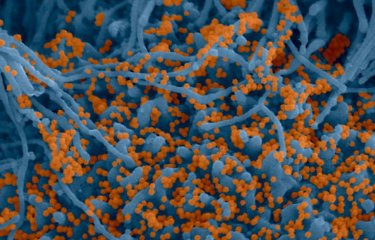-
News | 2019.02.06
A new breakthrough in limb development
Congenital limb defects are very common and occur in 1.5 in 1,000 births. Some are minor, such as a missing finger, while others are more serious, a missing limb for instance. Fundamental biology looks at the buds of developing limbs and how this development may be linked to defects. Limb position is fairly constant within a same species and yet relatively variable in vertebrates. In an article...
-
Page avancée | 2019.02.14
Pasteur Network
The Institut Pasteur is proud to be a member of the Pasteur Network.The Pasteur Network is a vast human and scientific communitywith more than 30 members in over 20 countries contributing togetherto the improvement of global health.
-
Fiche maladie | 2019.02.19
Alzheimer's disease
Alzheimer's disease is a neurodegenerative disease that mainly affects memory but also has an impact on other cognitive functions, for example those related to language, reasoning and learning. Alzheimer's disease generally leads to a loss of independence. It is one of the leading causes of disability and dependency in elderly people worldwide. There is currently no treatment for Alzheimer's...
-
Document de presse | 2019.02.18
Gene therapy durably reverses congenital deafness in mice
In collaboration with the universities of Miami, Columbia and San Francisco, scientists from the Institut Pasteur, Inserm, CNRS, Collège de France, Sorbonne University and the University of Clermont Auvergne have managed to restore hearing in an adult mouse model of DFNB9 deafness – a hearing disorder that represents one of the most frequent cases of congenital genetic deafness. Individuals with...
-
News | 2019.02.20
Mosquitoes and viruses by Sarah Merkling
How do mosquitoes transmit viruses to humans? Sarah Merkling, researcher at the Institut Pasteur and laureate of an L'Oreal-UNESCO For Women in Science Award, explains her work.Sarah Merkling is a postdoctoral fellow in the team of Louis Lambrechts (5-year group Interactions Virus-Insects), at the Institut Pasteur (Paris). She explains her work (see video below in French) on the interactions...
-
Reportage | 2019.02.21
A team tackling the mysteries of the microbiota, the brain and the immune system
Every day, the members of the Microenvironment and Immunity Unit directed by Gérard Eberl at the Institut Pasteur focus their efforts on understanding the microbial mechanisms involved in diabetes, obesity, chronic childhood diseases, liver disease and colon cancer. This tireless team of scientists are constantly pushing their boundaries to improve their knowledge of the microbiota and unravel...
-
Document de presse | 2019.01.24
The new Institut Pasteur strategic plan for 2019-2023
After taking office as President of the Institut Pasteur in January 2018, Professor Stewart Cole embarked on the development of a new strategic plan for the Institut Pasteur for the period 2019-2023. On December 21, 2018, the Board of Directors unanimously adopted this ambitious yet realistic action plan for the next five years.Three priority scientific areas have been identified: • emerging...
-
News | 2019.02.21
A research ethics committee at the Institut Pasteur since 2009
The Institut Pasteur Institutional Review Board (IRB) protects the rights and safety of participants in research carried out by the Institut Pasteur abroad. Since it was set up in 2009, it has monitored nearly 50 international research projects involving human subjects. The Board is currently chaired by Dr. Gilles Raguin, a physician specializing in infectious diseases. We asked him to tell us...
-
Document de presse | 2019.02.27
Zika: silent long-term circulation in Thailand
The circulation of the dengue virus for the past sixty years in South-East Asia is relatively well known. For Zika, the situation is much less clear. In an attempt to shed light on Zika circulation, scientists from the Institut Pasteur and the CNRS, in collaboration with US teams and the Thai National Institute of Health, decided to investigate the history of the Zika virus in Thailand. They made...
-
Document de presse | 2019.02.28
New research suggests earlier emergence of malaria in Africa
Malaria, which claims hundreds of thousands of lives each year – mainly children and especially in Africa –, is one of the leading causes of death by an infectious agent, the Plasmodium falciparum parasite. In research on malaria, the genetic mutation that causes sickle cell anemia (also known as drepanocytosis), a chronic disease that is often fatal in children under five, caught the attention...


